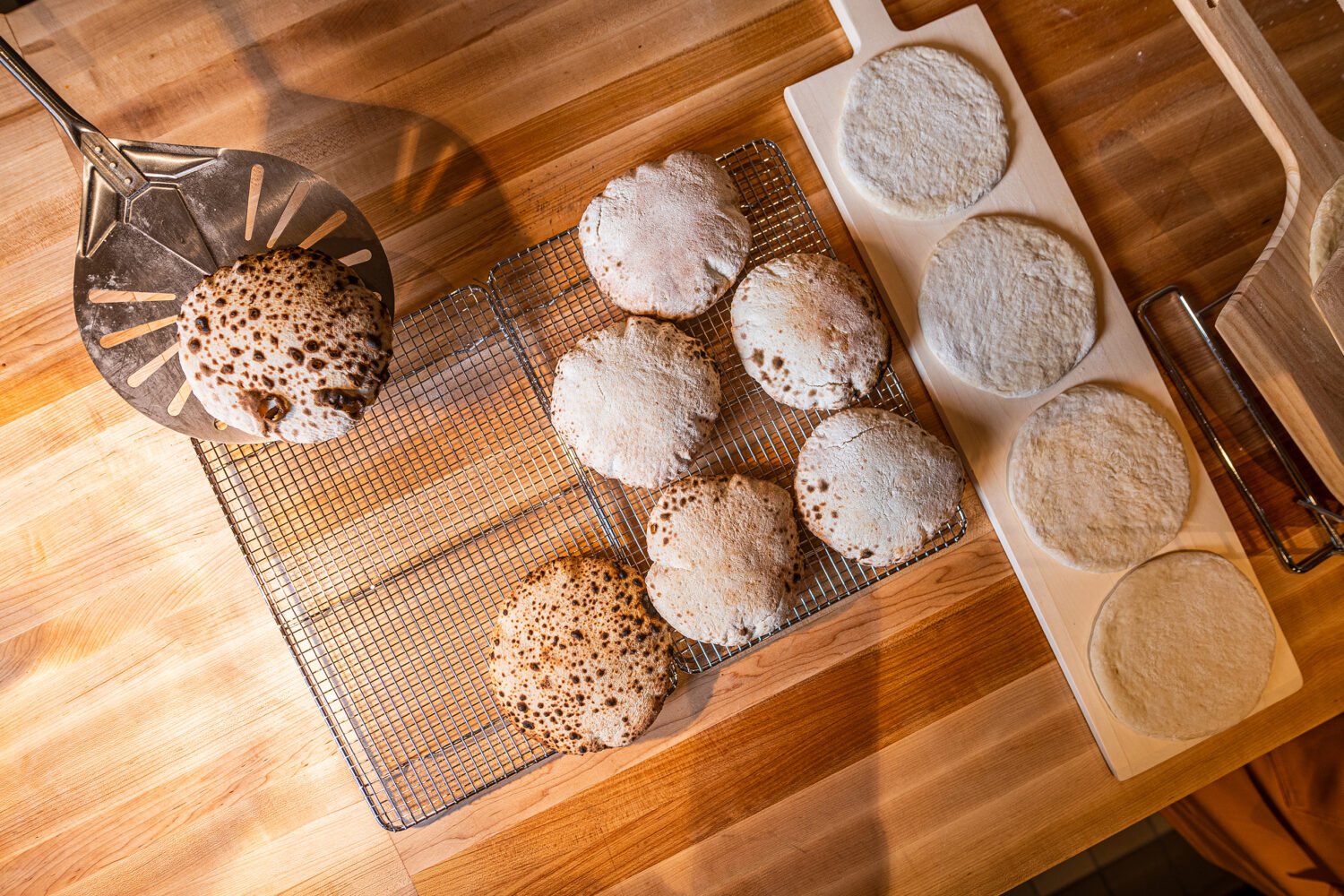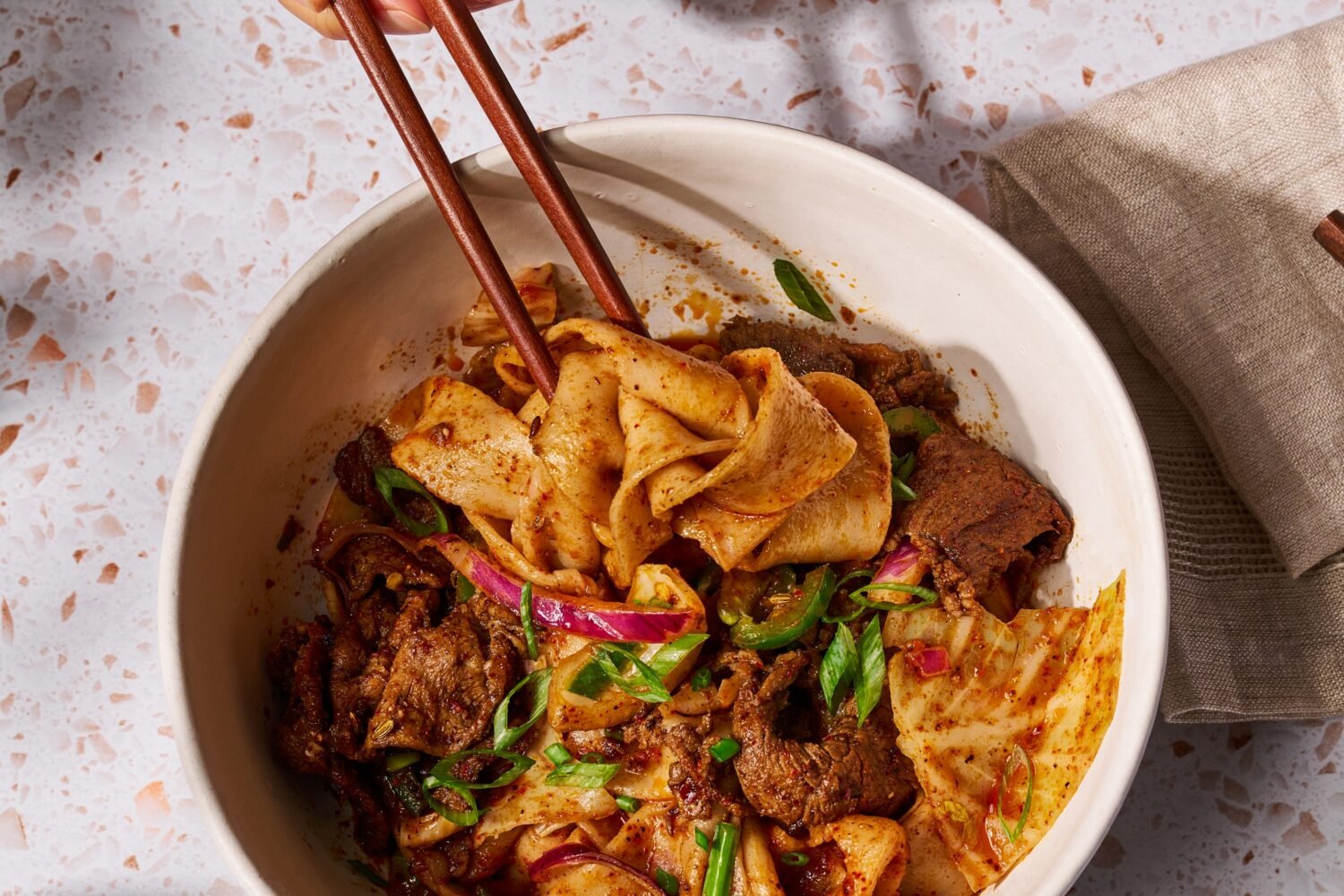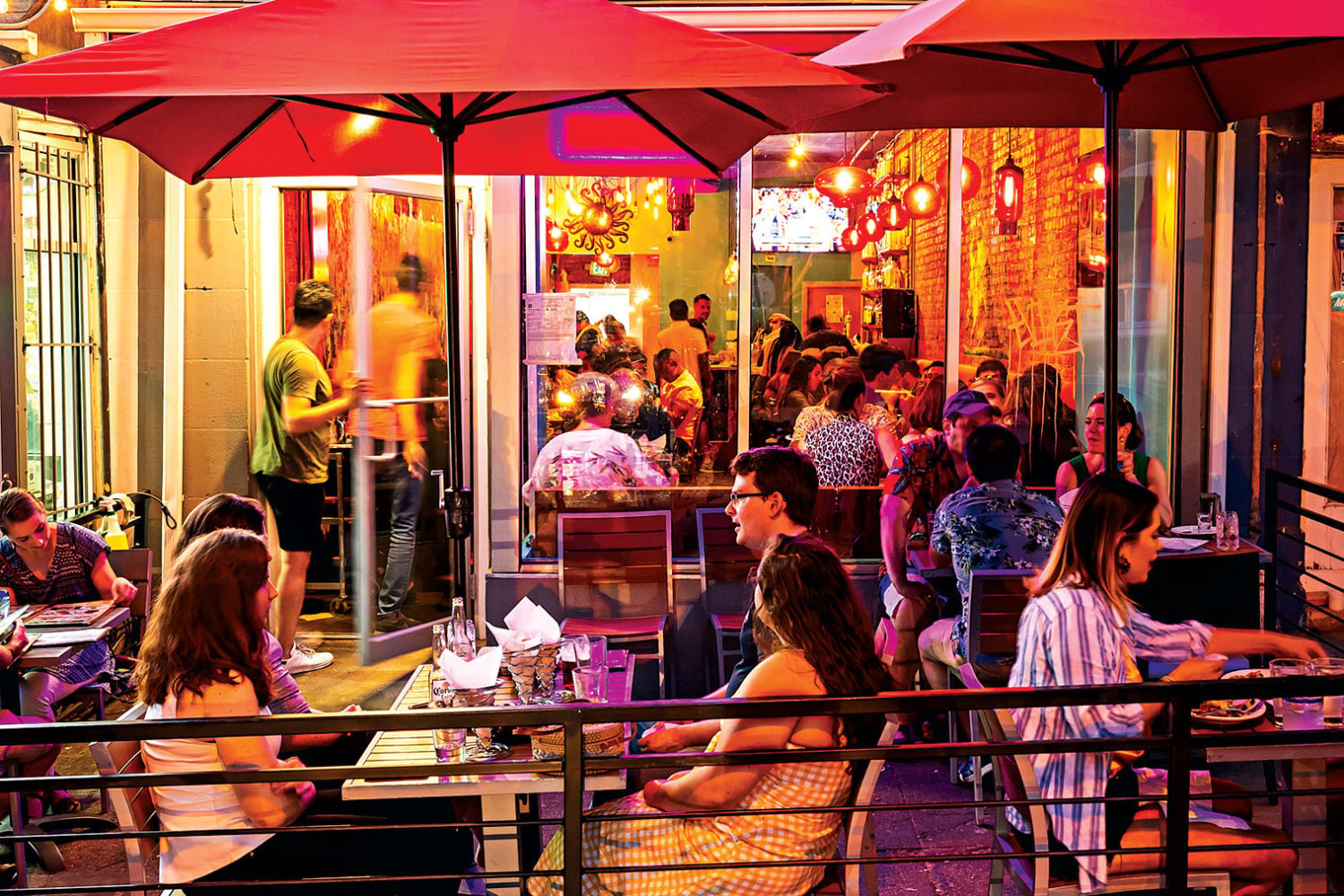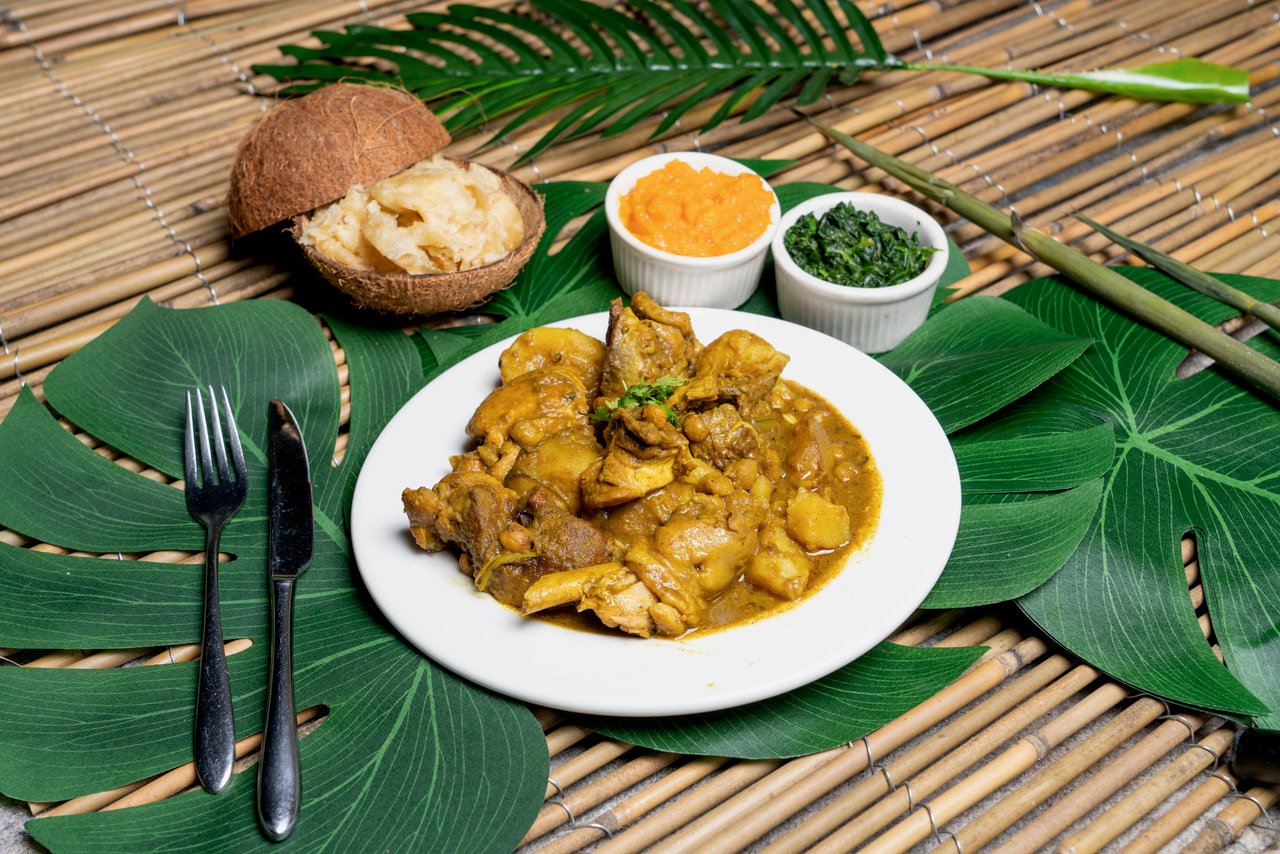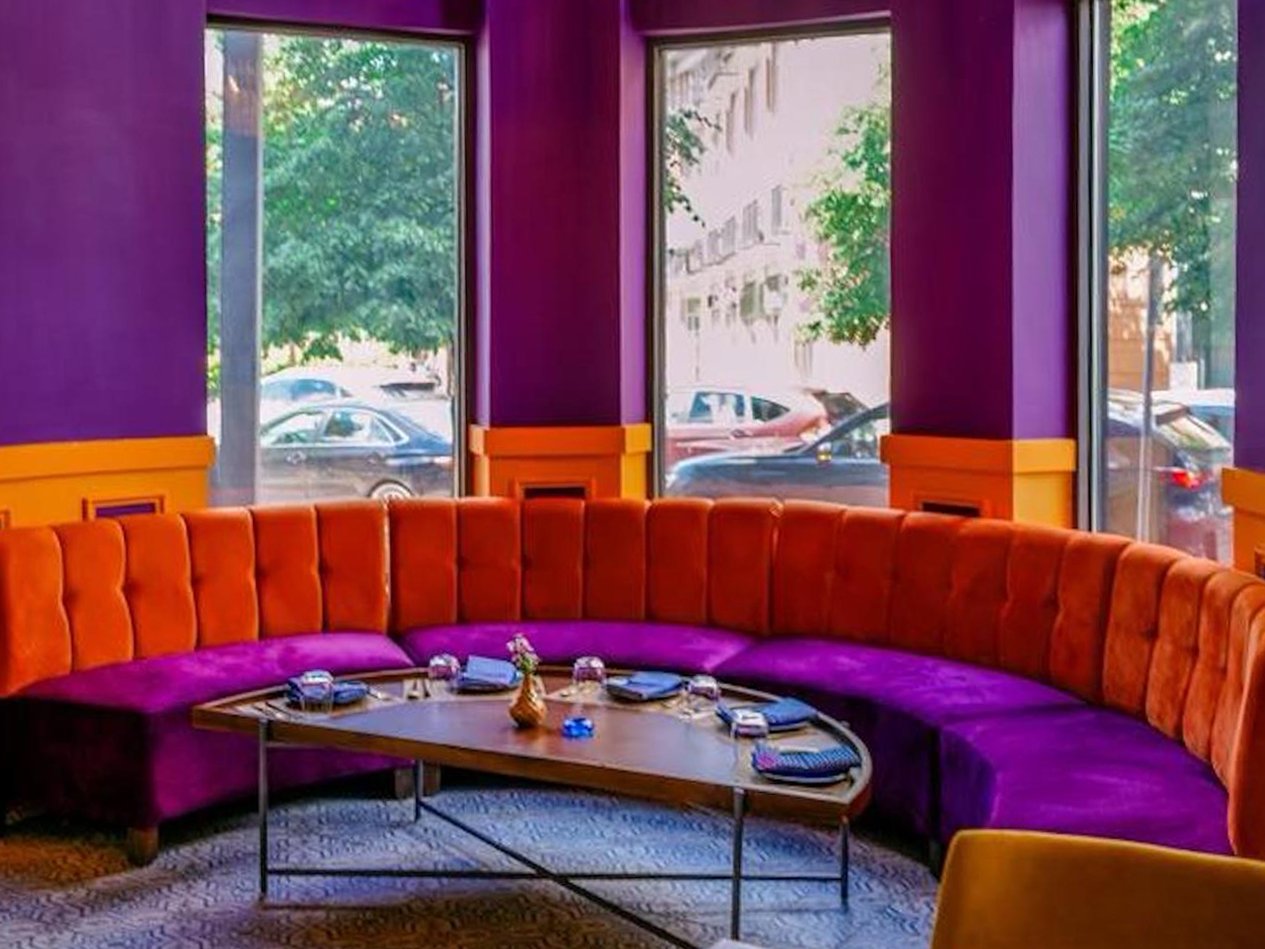A few years ago, Henji Cheung was working as a chef at the Metropolitan Museum of Art in New York. It’s a giant kitchen operation, but his job was to woo donors with Japanese uni, Irish langoustines, Alaskan king crab—all the luxury ingredients he could think of: “There were no food costs [to worry about], which is pretty amazing.” Even so, another restaurant was in the back of his mind—the one that compelled him and wife Sarah Thompson to cram crystal lanterns and other antiques-shop finds into the guest room of their apartment in hopes of using them for a future dining room of their own.
Lucky for us, that dining room is in Columbia Heights, not Manhattan, and it’s open to regular diners, not just patrons of the arts. Last year, the couple visited Thompson’s sister in DC, and within a month they had a new apartment. Soon after, they jumped on the 11th Street vacancy that once held the Good Silver and Kangaroo Boxing Club.

Queen’s English, which opened in April, is hard to miss—its sign is tiny, but its exterior is painted a stunning green (custom-matched to a jade necklace). Inside, a languidly cool dining room mixes sleek midcentury-modern furniture with classic Chinese details. A friend helped them create a pink-and-gold chinoiserie wall covering. Another made them a glossy walnut medicine chest. That lantern from the antiques shop? It’s right up front.
Although the restaurant has been drawing crowds—it (ugh) takes only a limited number of reservations—Cheung and Thompson still do most of the kitchen prep work, which includes barrel-aging soy sauces and making batches of XO sauce. At night, Thompson oversees the dining room, sometimes proffering gratis swigs of drinks she’s playing around with—such as a fabulous Portuguese-style red wine infused with white peppercorns, sour cherries, and fiery agua ardiente. She’s also behind the list of funky, mostly natural wines and compulsively downable mixed drinks. (Don’t miss the whiskey-sour-like Happy Valley . . . or two.)
The menu, which uses Cheung’s Hong Kong childhood as a touchstone, is a mere 14 items long. The first dish is as memorable an opening track as “Welcome to the Jungle.” Many Chinese restaurants offer a cucumber salad. Cheung’s riff is one of the most artful I’ve seen, with concentric circles of thinly sliced cucumbers soaked in sesame oil and red vinegar, then strewn with flower petals. Smoked bits of celtuce—the of-the-moment vegetable also known as Chinese lettuce—and briny pops of trout roe make it electric.

Cheung employs vinegar, soy, and ginger the way Roy Lichtenstein used primary colors. One or all of those ingredients are front and center in nearly every dish. Rough-chopped ginger root gives a homey spin on a soy-poached chicken (served claw and all). It’s pure comfort. Thread-like enoki mushrooms soak up a sweet soy sauce infused with prickly-ash berries, similar to Szechuan peppercorns. A coddled egg melts into the mix, turning it as luxe as carbonara. A sizzling platter of asparagus features a soy-and-vinegar-based sauce made with turmeric and Scotch bonnet peppers the couple foraged in Jamaica four years ago. (Cheung adds liquid to it every day, and the ingredients live on like a sourdough starter.) It’s a terrific foil for its lush topping of plump crabmeat and crispy shallots.
The chef manages a skillful balancing act when it comes to richness. A quartet of daikon fritters is probably his most labor-intensive dish—the radish is cooked three times until it reaches a dense custardiness, then seared and painted with Kewpie mayo and oyster sauce. It’s as decadent as dessert. Good luck putting your chopsticks down. A lamb rib, rubbed in five-spice and mushroom soy sauce, is essentially confited in its own fat during a slow braise. On its own, it tastes gratuitously unctuous. But add a sliver of onion pickled in fermented vinegar and it suddenly makes sense.
There aren’t many lows on the menu, but they’re there. As much as Cheung wants to be an ambassador for the snappy texture of jellyfish, the dish is flat, even with a toss of bacon and peanuts. And a whole branzino was nicely cooked but draped in a dimmed-down sweet-and-sour sauce. Hand-cut noodles look neat—one side is blackened with squid ink, the other is pale—but taste gummy.
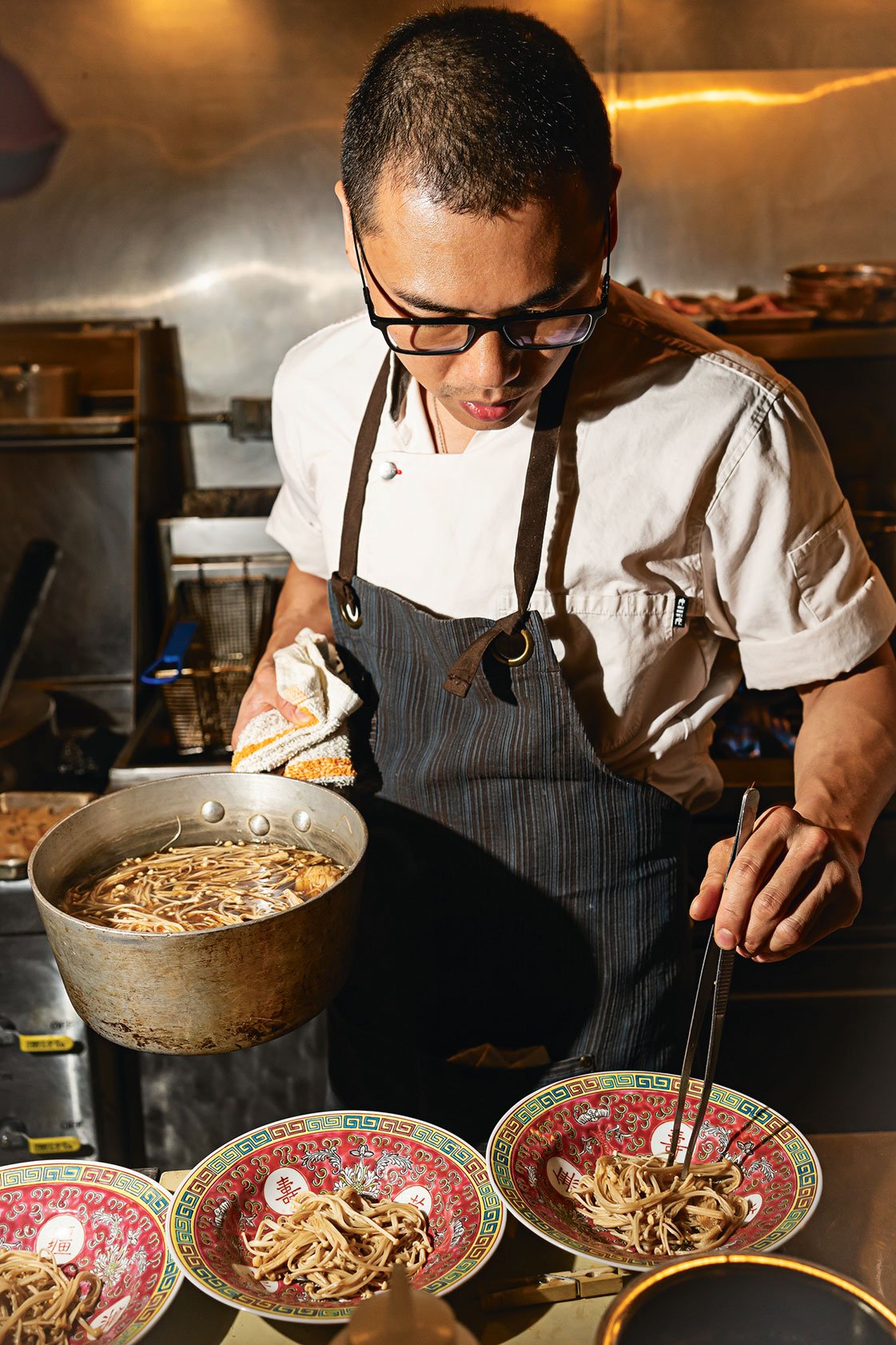
It pays to listen to your servers—all of mine were warm, helpful, and expertly informed. One nudged me toward a wine I’d never heard of—a cloudy Austrian Welschriesling that paired well with the food that followed. Another delivered a plate of sweet, plump shrimp with instructions to eat them head, shell, and all (but left a bowl for the shells behind just in case). They were better his way.
When Queen’s English first opened, I was ready to declare it the next Bad Saint (small, limited reservations, thrilling food, cool music). But Thompson and Cheung seem determined to make their restaurant a fixture for Columbia Heights residents. “Are you from the neighborhood?” is a question I got on each of my visits. During one, a guy walked through the dining room with a toddler on his shoulders.
Still, a small velvet rope sits in front of the restaurant. Smartly.
This article appears in the July 2019 issue of Washingtonian.


